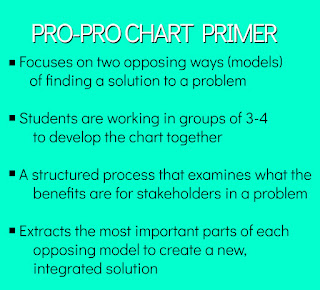Cycling Back to the Beginning
It’s the last week before the holiday break. When I teach grade nine math my goal is to always wrap up the teaching of curriculum before the break. I do this for two reasons. First, so that we can spend two weeks engaging in review activities to help prepare for the final exam, which in this case is the EQAO. The second reason is so that we can play around with a final performance task that is a bit more open than usual.
I had no idea if this plan would hold up now that our grade nine course team was trying a blend of project based learning. When I step back and think about what our team has accomplished over these four months, I’m pretty pleased. We started the semester with a question that was very loosely defined, “Can we teach Grade Nine Math using projects?”. We took a risk and dove in.
After playing with Barbie Bungee, Dandy Candies and some intentionally frustrating algebra problems we decided on our next focus: We wanted to use ratios to help drive home with the class the need for more formal algebra.
| A respectable ratio |
We started with an activity that asks students “What is the ideal Mullet Ratio?” This is an activity that I first saw via Jon Orr on twitter but I’ve come to learn has travelled to us from Matt Vaudrey in California. In this activity students are asked to determine what is the ideal length of “party” to “business” in a mullet. It’s silly, students laugh, then they start debating, and then they calculate to justify if their opinions are correct. The two days we spent on this activity were hilarious.
Of course, we needed a suitable project to go along with ratios. We know from past experience that there are often challenging ratio problems on the Grade 9 EQAO. The team wanted to spend time working on different ratio problems in order to set our students up for success in January. We decided on introducing the class to Nana’s Chocolate Milk, another three act task by Dan Meyer.
We adapted things slightly to allow for students to complete a formal project. We asked our students to find their favourite recipe and then intentionally mess it up. They then had to “fix” their recipe and prove to us that they ingredients were still in the same ratio. We even asked them to think back on their work with linear relationships and create some graphs and equations for their recipe.
| Bacon is ALWAYS the denominator |
| This one impressed me |
After the students finished with “Nana’s Favourite Recipe” we realized that we needed to dive into the Analytic Geometry strands of the curriculum. We spent a good two weeks doing some formal instruction with our classes as this is probably the most formal component of the course. At the end of the two weeks we challenged our classes to create their own drawing in Desmos to show off what they have learned. We asked for drawings with 8 different lines, since that’s all our classes knew how to do with equations. We were surprised by the level of depth our students went to. One boy in my class asked me how to draw curved lines. When I wouldn’t tell him, he didn’t give up, rather he did some research on his own and then shared his knowledge with the class.
We have spent the past week trying up any loose ends or curriculum expectations that we did not quite cover. For the final two days before the break we will ask our students to play with cup stacking, running a project that is heavily influenced by Alex Overwijk and his Thinking Classroom. By the end of the week students will have created models of different cup stacking strategies, analysed them and extrapolated from their data.
| That's some good cup stacking! |
What came out of our experiment has been an unintentionally spiralled course. Algebra and abstraction skills became what we dialed down on but we didn’t spend all that much time on the details. Our students felt the need for the mathematics, asking for more efficient ways to do things. When we presented the cup stacking activity to them they were already searching for ways to create equations and models.
There were many days where the students led the class, posing interesting questions and then answering them. The teachers became facilitators of great discussions, parachuting in on different groups when they needed assistance or a push to go a bit deeper with their learning. Some days were great, other days were disasters. On the bad days, the team would go back to the drawing board, talking about what we could do better in order to help students uncover the curriculum. We tried something new and learned a lot in the process. I can’t wait to do it again next semester.

Comments
Post a Comment